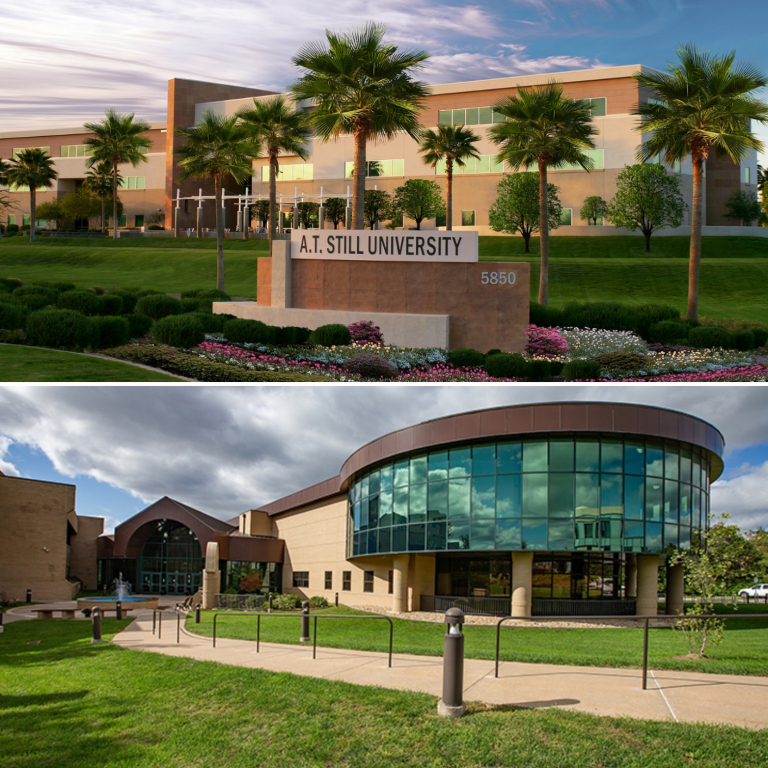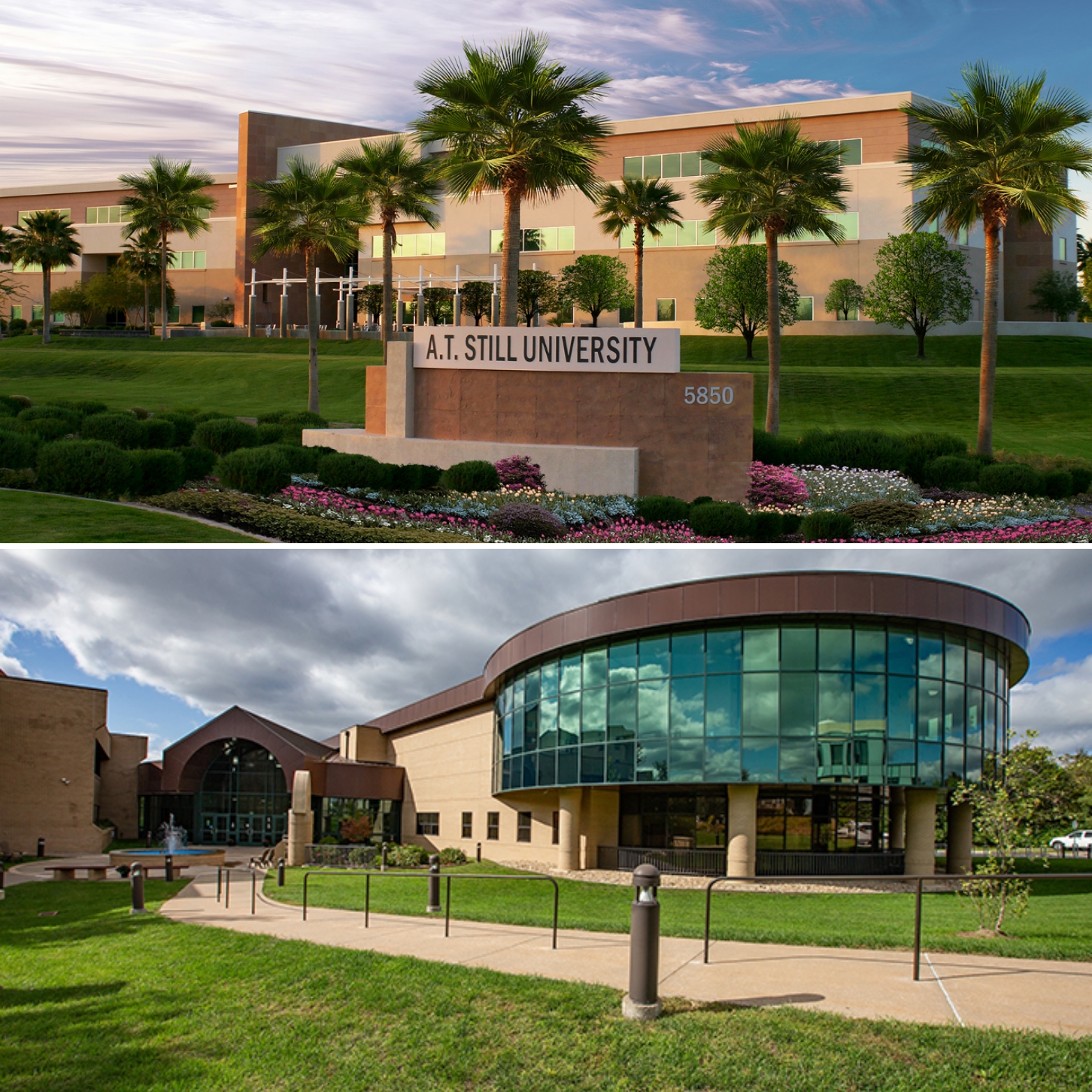ATSU-KCOM, ATSU-SOMA named in U.S. News & World Report’s Best Medical School rankings
Posted: April 6, 2022
Achievements in A.T. Still University-Kirksville College of Osteopathic Medicine’s (ATSU-KCOM) and School of Osteopathic Medicine in Arizona’s (ATSU-SOMA) mission of service to medically underserved populations is reflected by U.S. News & World Report’s 2023 Best Medical Schools rankings, which highlight the number of graduates practicing in primary care fields, rural, and underserved areas.
ATSU-KCOM was ranked No. 5 in Most Graduates Practicing in Primary Care Fields, No. 6 in Most Graduates Practicing in Rural Areas, and No. 24 in Most Graduates Practicing in Medically Underserved Areas, according to the magazine’s newly published rankings.
“As the founding college of osteopathic medicine, ATSU-KCOM is proud to be recognized for its successes in meeting the mission of the University, as reflected by the rankings in U.S. News & World Report for medical schools across the nation,” ATSU-KCOM Dean Margaret Wilson, DO, ’82, said.
“ATSU-KCOM continues to strive to produce the best trained graduates who practice and serve where needed most, in order to provide care to patients and communities.”
ATSU-SOMA was ranked No. 12 in Most Graduates Practicing in Primary Care Fields, No. 31 in Most Graduates Practicing in Rural Areas, and No. 72 in Most Graduates Practicing in Medically Underserved Areas.
Rankings are compiled by U.S. News & World Report and the Robert Graham Center, a division of American Academy of Family Physicians. Medical schools are ranked by the percentage of graduates practicing direct patient care in primary care fields, rural areas, and medically underserved areas.
Data examined included graduates from 2013-15. Of those ATSU-KCOM graduates, 47.8% are practicing in medically underserved areas, 44.3% in primary care fields, and 17.5% in rural areas. Of ATSU-SOMA graduates, 39.3% are practicing in primary care fields, 33.8% in medically underserved areas, and 8.3% in rural areas.
